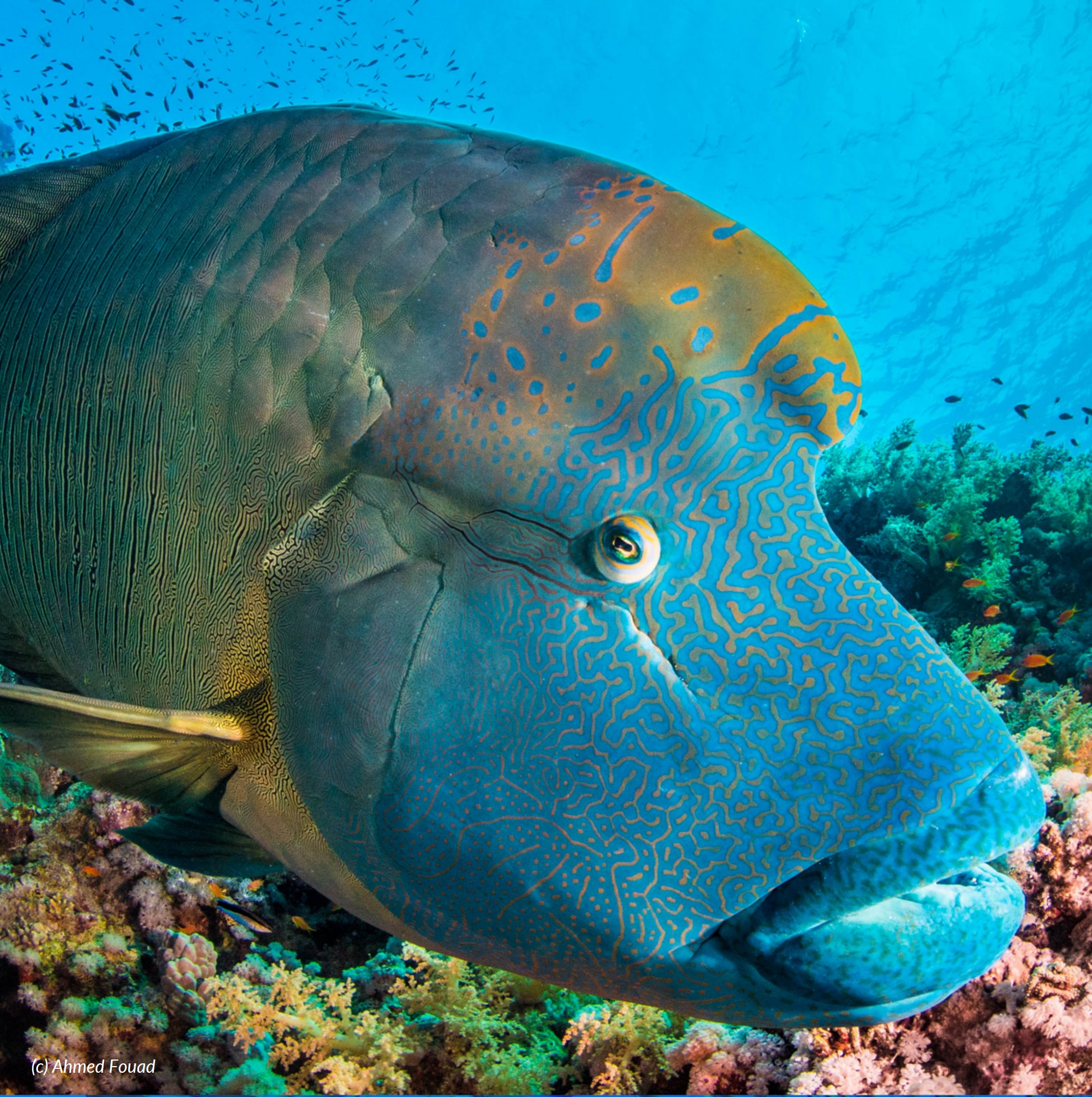
National Parks/ Sanctuaries
-
Common Names
giant wrasse, humphead, humphead wrasse, maori wrasse, napoleon wrasse, truck wrasse, undulate wrasse
Regions
MyanmarIsraelAustralia
Population
Approximately 10,000 mature individuals
Habitat
Napoleon wrasses inhabit coral reefs and rocky areas in tropical waters.
Weight(in lbs) and Life Span
440, and 30
Regions
Myanmar, Israel, Australia, Indonesia, Kenya, Egypt, India, China, Djibouti, Japan, Mozambique, Malaysia, Thailand, Philippines, Tanzania, Hong Kong, Viet Nam, Taiwan, Singapore, Saudi Arabia, American Samoa, Micronesia
The Humphead Wrasse (Cheilinus undulatus), also known as the Napoleon fish, is the largest member of the wrasse family and a striking coral reef inhabitant. Males can reach nearly 2 m in length and weigh around 180 kg, while females typically stay around 1 m. Distinguished by a distinctive forehead hump, thick lips, and bold facial lines, these fish exhibit vivid blue-green coloring with intricate labyrinth-like patterns across their bodies.
They are long-lived (up to 50 years), slow-growing, and protogynous hermaphrodites—making them particularly vulnerable to overfishing. A key predator of invertebrates such as crown-of-thorns starfish, they play a valuable role in maintaining coral reef health. Despite an extensive range across the Indo‑Pacific, they remain rare due to high demand in luxury food and aquarium markets, illegal trade, and habitat degradation. Effective conservation via reef protection, trade regulation, and sustainable fisheries management is essential for their recovery.
Activity Instructions
- Draw the Animal: Use the next page to draw a picture of the animal. Use your imagination and make it colorful!
- Write an Essay: Write a short essay about the conservation efforts to save this animal. Here are some questions to guide you:
- Why is this species important in its ecosystem?
- What are the threats it faces, and how can we help?
- What do you find most interesting about this species?



